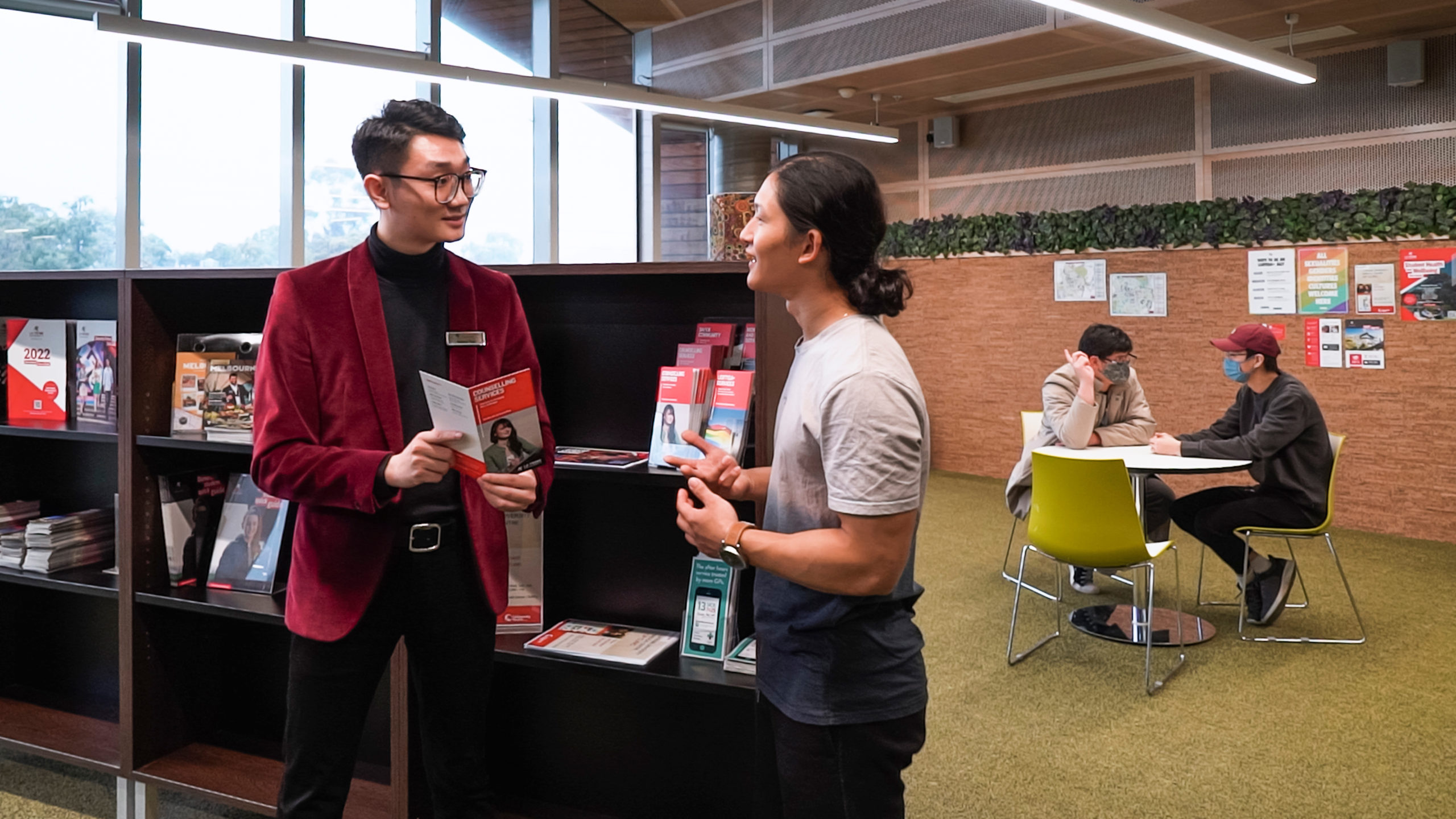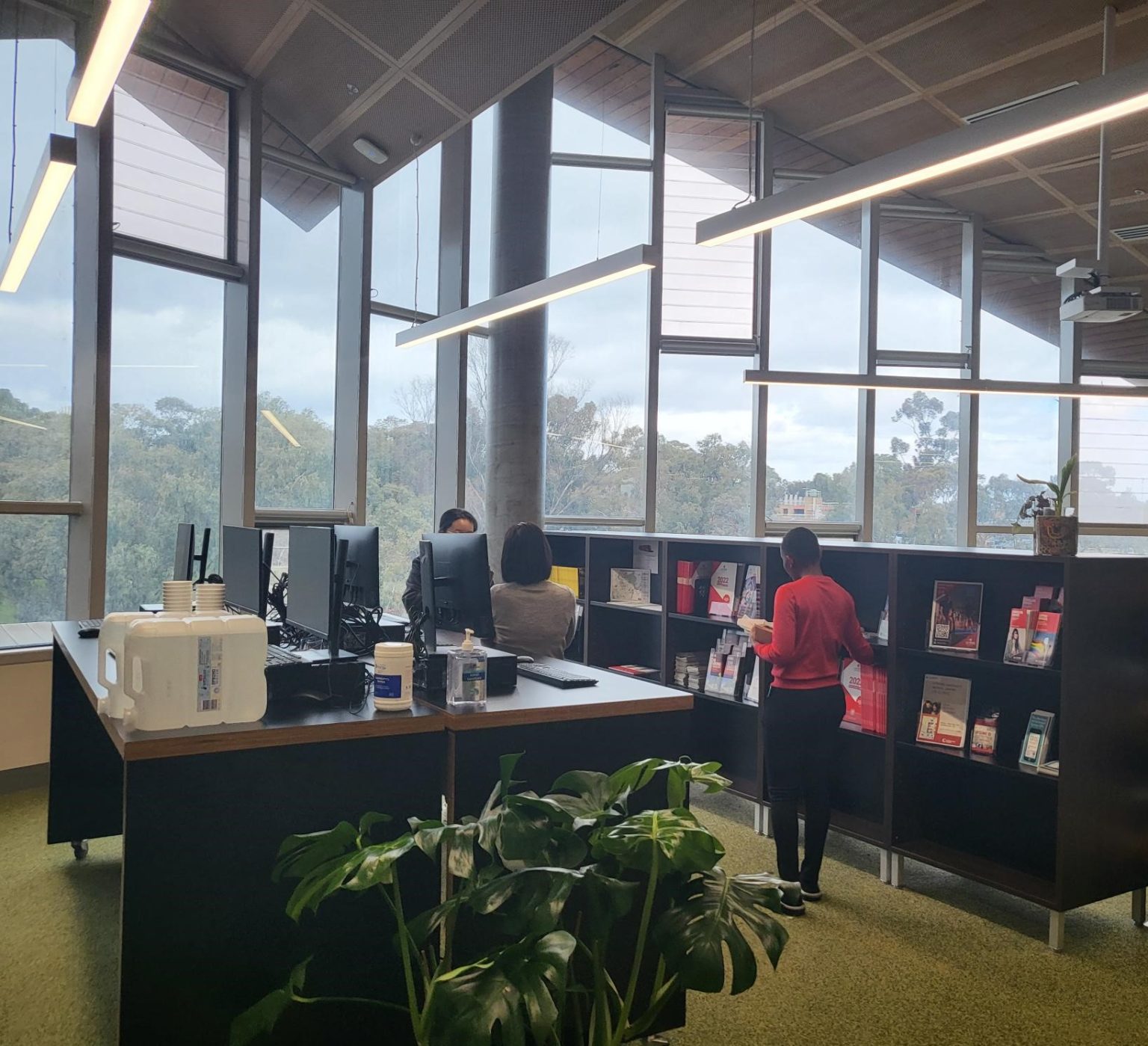Designing Student Support Strategies (Section 1)
Case Study 1: A one-stop-shop for student wellbeing and academic support: Designing the LTCA Wellbeing Hub

Tertiary students have a greater risk of developing mental health problems and have a higher prevalence of mental health issues than the general population (Copeland, 2021). An estimated 25% of Australian tertiary students will experience a mental health condition (Pogrmilovic et al., 2021). Research suggests that factors contributing to poor mental health outcomes in Australian students include academic and financial pressures, isolation, loneliness, and poor self-care (Brown et al., 2017). Wellbeing and mental health affects how students learn and may impact their chances of academic success (Gorczynski, 2018).
La Trobe College Australia (LTCA) Student and Academic Services Manager Niki Kim explains how the college sought to support student wellbeing and mental health by streamlining access to support services via the creation of the LTCA Wellbeing Hub.
The percentage of Australian higher education students that will experience mental ill health.
Pogrmilovic, B., et al. (2021).
The percentage of young Australians who reported their mental health had been impacted by COVID-19.
The percentage of Australian undergraduate students who have considered an early course exit because of poor mental health and stress.
What challenge or issue were you seeking to address?
We were seeking to support student wellbeing and academic outcomes by increasing access to student services and staff. Previously, student services staff worked from a closed office environment, which didn’t allow for the provision of a student-facing service. While we had a staffed reception area, we wanted to create a student-facing wellbeing and support hub that offered easy access to student services, while also providing an environment that is friendly and welcoming, with areas for students to gather and engage socially.
What approach did you take to overcome this challenge?
We recognised that we needed to adapt to the needs of our students; how we used to service students 10, or 20 years ago is very different to what our students need and expect today. We wanted to avoid sending students from one space to another in order to access support. This was achieved through the creation of a dedicated on-campus environment for students: a safe, one stop-shop for them to seek help and support.
We also wanted to streamline access to these services. If support services are spread out across different levels and areas of the college building, the process of seeking support becomes more complicated. Students might struggle to find the location of the service they need, and this may actually discourage them from engaging in help-seeking behaviours. We wanted to make sure that any student with a problem knows that the Wellbeing Hub is the first place to go. When there’s an emergency, you know to call 000, that’s the number no matter the problem, you don’t want to have to memorise different numbers for the fire department, the police, and the ambulance. Our students know that any issue you might be having, any questions, head to the Wellbeing Hub and they will be able to assist you. Our main goal is to never send the student away without reaching some sort of outcome for them. Even if we can’t solve their challenge on the spot, we can provide them with information about the next steps they should take to resolve their issue.
What informed the design of the physical environment of the Wellbeing Hub?
We wanted the space to be cosy, but big enough to host small events and activities. The visual design of the Hub was important: it’s like a shopfront, and you don’t want to go into a shop that looks scary or intimidating. We needed to be able to partition the space so our staff could work from one side of the Hub, while also providing dedicated spaces for our students. The Hub is divided into three sections: the student services staff work area, a space with computers for student study, and a social gathering area. It can be decorated for events and cultural celebrations, providing opportunities for students to develop a sense of institutional belonging and connection. We also provide students with resources and literature on topics such as mental health and wellbeing, respectful classrooms, LGBTQIA+ support and allyship, upcoming events on campus and across Melbourne and Victoria, and job seeker support for both international and domestic students.

How will the Wellbeing Hub support student retention and success?
We have a number of retention initiatives planned, including student gatherings and lunches that take place just before census date. This trimester we will decorate the Wellbeing Hub to make it look a little spooky and host a Halloween party. Students are encouraged to dress up and come to the Hub for trick or treating. These events give us the opportunity to check in on our students, find out how they are doing with their studies, and if they have made friends. They also provide a chance for us to connect students with both their peers and teachers. We know that students who have positive connections and relationships with their teachers feel more comfortable in accessing support services, have a better quality of student life and are more likely to be retained and successfully complete their studies.
We also invite our partner university’s student retention and conversions team to our events, in order to support our students’ transition to the university. During the events, the university team will walk around, talk to the students, and ask them what they plan to study when they transition from the college. They might even be on the team managing the bachelor program that the student plans to articulate into, so they can introduce themselves and let the students know that they will be working with them in a year or two. This allows us to get some friendly faces from the university into the college, and really helps when our students go through orientation for their bachelor program as they already recognise people in the team.
What has been the impact of the Wellbeing Hub?
We can now better and more effectively service and support our students, and there are obvious benefits to wellbeing, belonging and connection. We’ve also noticed a positive change in our relationship with our university partner. They have seen the changes taking place at the college, and they have become more involved with the events and initiatives that we run. They are also more open to resource sharing and collaboration. Previously it did feel like there was a sense of connection missing between the university and the college. We now have an increased presence on the university campus, and university lecturers and staff who didn’t know much about the college, (who we are, who our students are, what we do), are slowly seeing that we are an important part of the university. Now, when a student is in the university agora or at the library seeking support and they say, “I’m actually a college student”, the university staff member won’t simply redirect the student back to the college. Rather, they might say, “Okay, let me see what I can do” and they will contact us on Microsoft Teams or phone us – they are really trying to help to service the student.
What are the next steps for the Wellbeing Hub?
We have hosted college 35 events over the past year, and we want to perfect those events, continue to improve them, and adapt them to meet our students’ needs. Although many of our students remain offshore, or are studying online, we need to continue running on-campus events – we need to act now rather than wait until everyone is in a position where they can return to campus. We send the event invitations to all students, including those studying offshore. These students are able to tick an RSVP checkbox that says, “sorry I can’t come as I’m not onshore”. It’s a way of letting offshore students know that we are looking forward to welcoming them and there are lots of great initiatives and events that will be waiting for them.
Sources:
Browne, V., Munro, J., & Cass, J. (2017). The mental health of Australian university students. Journal of the Australian and New Zealand Student Services Association 50(1) https://www.researchgate.net/publication/323113108_The_mental_health_of_australian_university_students
Copeland, K. (2022). The mental health and wellbeing of tertiary students. Navitas Pty Ltd. https://sway.office.com/CGWxAfrywgATXZHv?ref=Link
Gorczynski, P. (2018). More academics and students have mental health problems than ever before. The Conversation. https://theconversation.com/more-academics-and-students-have-mental-health-problems-than-ever-before-90339
Pogrmilovic, B., Craike, M., Pascoe, M., Dash, S., Parker, A., Calder, R., (2021). Improving the mental health of young people in tertiary education settings. Policy evidence brief 2021-01. Mitchell Institute, Victoria University, Melbourne. https://www.vu.edu.au/sites/default/files/improving-the-mental-health-of-young-people-in-tertiary-education-mitchell-institute.pdf
Interested in sharing your own case study? Get in touch with the L&T team below.
